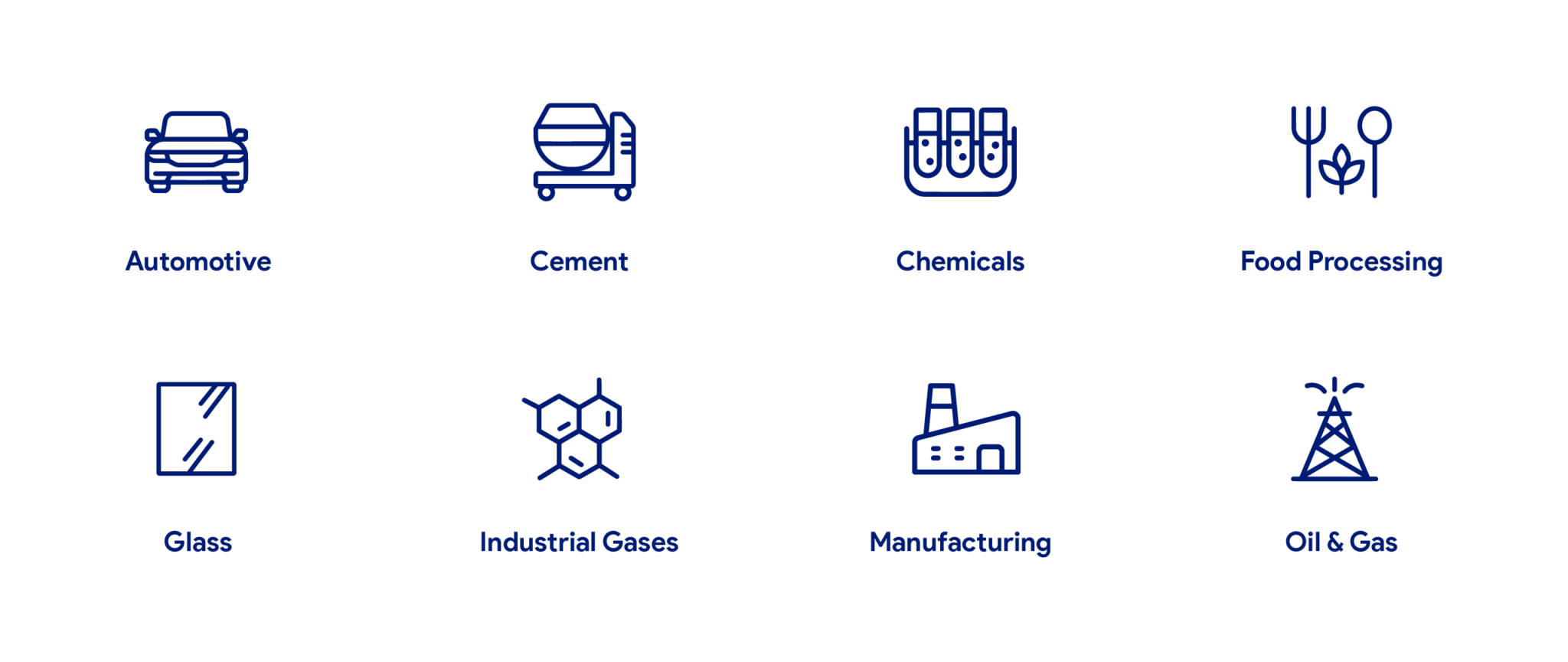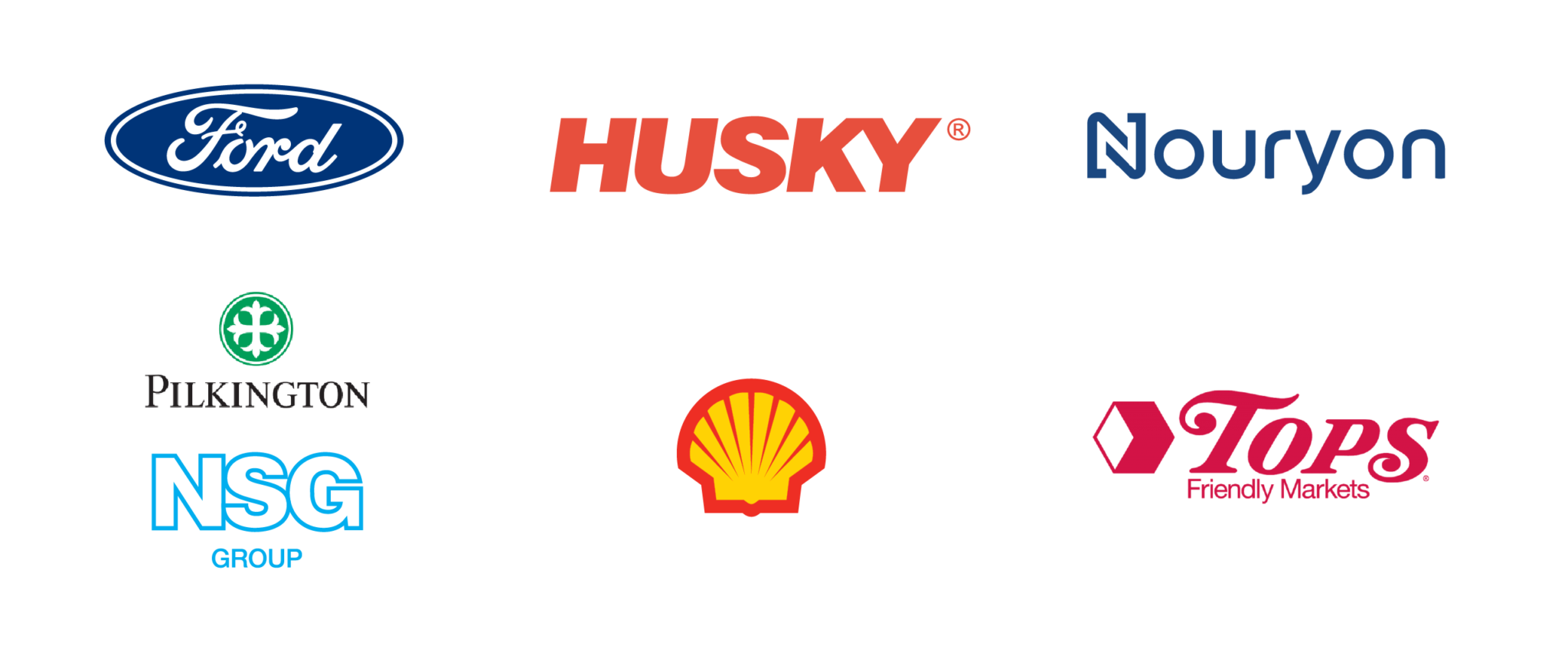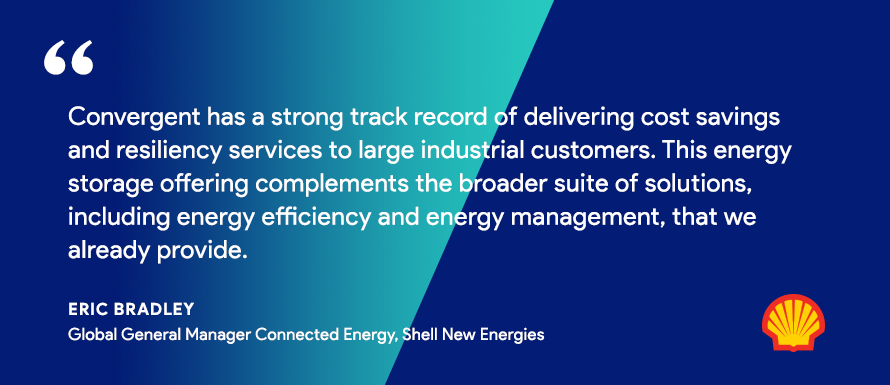Six Benefits of On-Site Renewable Energy
7-Figure Savings on Your Electricity Bill
Long-Term Hedge Against Rising Energy Prices
Lower Facility Greenhouse Gas Emissions
Potential Eligibility for Renewable Energy Credits (RECs)
No Change to Operations
No Capital Investment for Your Business
Industries We Partner With Include:

Select Partnerships:

About Energy Storage
Without energy storage (i.e., how the electric grid has been for the past century), electricity must be produced and consumed exactly at the same time. Energy storage systems allow energy to be stored when it is least expensive—and least carbon-intensive–and discharged—at the most expensive, carbon-heavy times. A win-win!
Success Story: Shell New Energies
Shell New Energies selected Convergent to develop battery storage systems at two of their facilities. The systems reduce the consumption of energy for the facilities by up to one-third of typical demand while increasing the reliability and long-term sustainability of the grid. One was the biggest behind-the-meter battery energy storage system in North America as of 2019.
Learn More about Convergent and Energy Storage
FAQs
Q: How will this impact my plant’s operations?
A: The power systems (storage, PV, or combination thereof) are connected to your plant, behind the meter, and parallel with the utility, meaning the plant will never see any fluctuations or power quality impacts from power provided by our system. You will not know they are operating unless you are looking at a system dashboard.
Q: Who is responsible for maintenance?
A: As an energy service provider, we cover everything required to design, install, finance, operate, maintain, and, if required at the end of life, decommission the system.
Q: How does power generated relate to power needed?
A: In the design phase we size the system to serve load. In some jurisdictions the utility will allow excess power from PV systems to be credited, which will be factored into our modeling up front. During operation utility grade metering allows us to match supply and demand dynamically.
Q: We have a unique plant, will it even work?
A: Every industrial plant is unique. As part of our due diligence process we gather a host of pertinent site details, ensuring we can integrate seamlessly based on voltage levels, equipment age, metering configurations, electrical infrastructure, and available space.
Q: How much can Convergent lower my energy bill?
A: It depends on how much energy you use and where your plant is located. We’ve lowered customers’ energy bills by up to 40%. Customers can typically expect multi-million dollar savings.
Q: How long do the batteries last?
A: We work with our integration partners to ensure the battery chemistry, design, and augmentation schedule match the proposed use profile and term. Our systems can be designed to last anywhere between 10 and 20 years.
Q: Where do you have systems installed and operating?
A: We have systems installed and operating across North America, including California, New York, Pennsylvania, and Ontario. We are under development in over 10 additional states, territories, and provinces.
Q: How long is a typical energy service contract?
A: Depending on the technology, utility, and region of the country, we can structure a project under terms that range from 10 to 30 years.
If you have additional questions or would like more information, please contact us directly.

We’re reducing costs and carbon emissions for customers including Shell and Ford and now we want to partner with you.